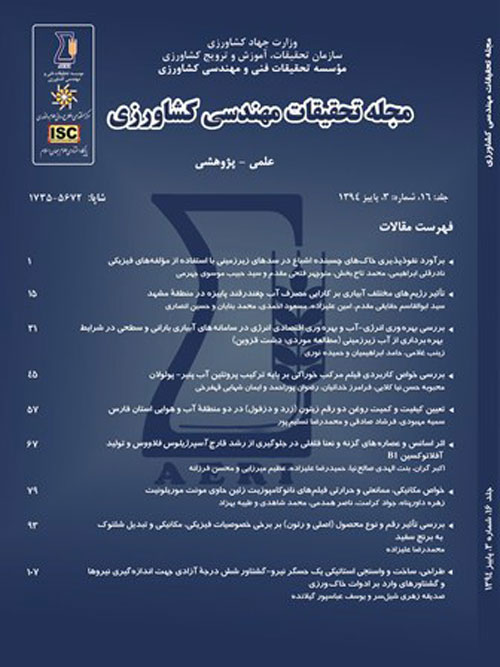Simulation of Subsurface Drainage Systems in Unsteady States Using System Dynamics
The system dynamics technique is an object-oriented approach that studies and manages complex feedback systems. Its merits include the friendly and easy development and improvement of a model. It is also used as a decision tool for engineering problems. In this paper, the system dynamics technique was used to simulate the performance of a subsurface drainage system in an unsteady state. The model was validated using experimental field data collected from sugar cane farms in Khuzestan. The effect of different parameters on daily water table level and drainage discharge was investigated. The standard error (SE) index was calculated to determine the agreement between the observed and simulated values for water table and drainage discharge. The results indicated that the SE for water table and drainage discharge were 10.2 cm and 0.13 cm per day, respectively. In addition, the predicted upward flux in the soil showed that it can compensate for part of the water required during the irrigation season.
-
Modeling of Drained Lands of Sugarcane Crop in Hakim Farabi Khuzestan Agro-Industry Using the Perspective of Water-Environment-Food Nexus
Mohammad Hooshmand, Hamed Ebrahimian, Teymour Sohrabi *, , Abd Ali Naseri
Iranian Journal of Soil and Water Research, -
Environmental Optimization of the Cultivated Area of Shahid Chamran Irrigation Network Using System Dynamics Approach
S. Azadi, H. Nozari*, S. Marofi, B. Ghanbarian
Journal of Hydrology and Soil Science,



